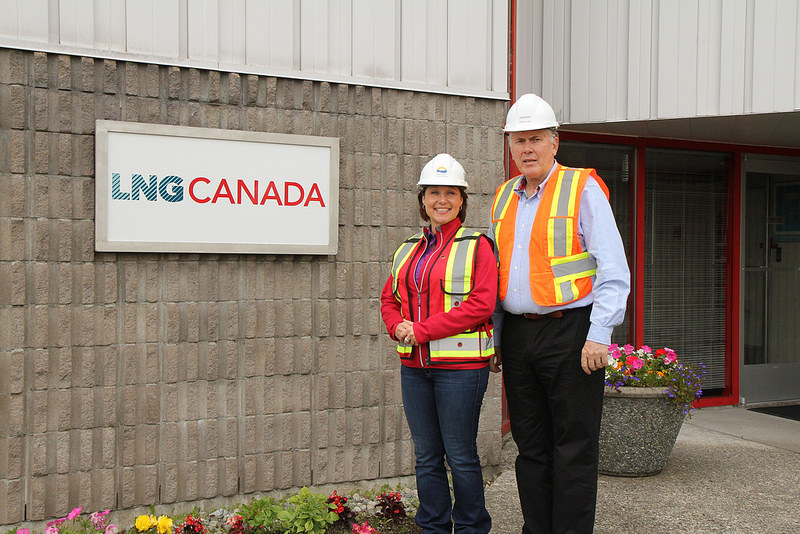The B.C. government’s proposed carbon pollution benchmarks for LNG plants leave much to be desired. The package is an impressive display of cognitive dissonance: thanks to B.C.’s inconvenient law, the 2007 Greenhouse Gas Reduction Targets Act, along with its carbon tax, the B.C. government has cultivated a reputation for being a climate action leader; there’s even evidence the plan is working with 2012 emissions below 2007 levels. But all of those gains fly in the face of developing an LNG industry, which would double or triple the amount of fossil fuels coming out of the ground for export to Asia, making it virtually impossible to meet B.C.’s legislated targets.
In the name of competitiveness, the industry has been concerned about any pesky regulations that would add to their costs. The proposed carbon standard for LNG facilities is good news for them: likely to have a small impact, though many details remain to be determined by cabinet in the months and years ahead. At best, we’ll see minor improvements to one part of a bigger supply chain that will, if all goes to plan, put up to 10 billion tonnes of carbon pollution into the atmosphere (by comparison, global emissions are about 35 billion tonnes per year).
Under the carbon standard, liquefaction terminals on the coast would be permitted to emit 0.16 tonnes of carbon dioxide (CO2) for every tonne of LNG exported, without penalty. This applies only narrowly to the terminals themselves, which use a lot of energy to super-cool gas into liquid form for transport on tankers.
The problem, however, is not so much the L (liquefaction) but the NG (natural gas). The rest of the supply chain — from fracking operation to processing plants and pipelines — is not affected by the carbon standard. Fracking in particular has raised concerns about impacts on water, earthquakes and leaks of methane (the principal component of NG, and itself a much more potent greenhouse gas than CO2). Many are now calling out “natural” gas for being anything but, with some preferring “fracked gas” or just “shale gas.”
The new carbon rules on L apply to only 30 per cent of the B.C. emissions for the industry. Also missing from the carbon standard are the emissions from combusting the gas in Asia. These emissions could be substantial, dwarfing B.C.’s current GHG emissions, if a major LNG industry were to take root in B.C. By accounting convention we only count the emissions released within our borders, so these are typically ignored. All in, this is a carbon beast of an industry.
The 0.16 tonnes standard may push the industry towards cleaner plants, as LNG plants typically are in the 0.22 to 0.25 range of intensity, according to Clean Energy Canada. However, there is an important escape hatch for companies that are above the standard, as they can either buy carbon offsets or pay into a technology fund for emissions. It’s not clear what the difference between the two would be, although the tech fund would cost $25 per tonne and offsets could be much less (this needs clarification). My sense is that the government thought “technology fund” sounded good due to the Alberta experience, but offset projects in oil and gas would basically be the same thing (there’s a whole other commentary about offsets in B.C. after a scathing Auditor General report in 2013).
But that is not all: the government will subsidize the penalty, as much 100 per cent of it for plants with emissions just over the standard (say, 0.17 tonnes), dropping on a sliding scale to 50 per cent of the penalty for plants at 0.23. Above that, no subsidy.
What’s this mean in terms of numbers? A 10 Mt LNG plant at 0.23 intensity would have to contribute $17.5 million to the tech fund, but half of that would be paid for by the government. By comparison, the profits to the company for exports to Asia would be just shy of $2 billion (at a moderate price of $14 per mcf and landed cost of $10). The post-subsidy hit to the company would less than half of one per cent of total profits. At 0.19 intensity, the subsidy ramps up and the hit to profits would be about one-tenth of one per cent.
So basically companies will have to choose at the design and engineering stage to implement pollution reduction technology if its cost is less than the stream of penalty payments over the life of the plant. And any additional costs can be written off against future LNG income tax revenues. If not, most of those technology fund or offset payments would just go back to the industry anyway.
One appealing option for the industry could be to source electricity for ancillary functions (not the liquefaction process itself but everything else) through BC Hydro at the cheap industrial tariff. This itself is another form of subsidy to the industry as BC Hydro has to pay much more to acquire that new electricity supply.
So overall the carbon standard is a small step for GHG emissions, and a giant leap for greenwashing.
Photo: BC Gov Photos/flickr



